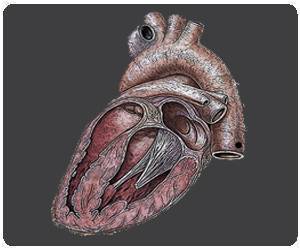A genetic error that weakens the aorta, placing patients with this and similar errors at high risk of aortic aneurysms and ruptures, has been identified.

‘A genetic error that weakens the aorta, placing patients with this and similar errors at high risk of aortic aneurysms and ruptures, has been identified.’





A study led by Washington University School of Medicine in St. Louis, in collaboration with Brigham and Women's Hospital in Boston, has identified a genetic error that weakens the aorta, placing patients with this and similar errors at high risk of aortic aneurysms and ruptures. The findings will help diagnose, monitor and treat patients with aortic disease not caused by well-known conditions, such as Marfan syndrome and other genetic mutations known to disrupt connective tissues. The study appears in the Proceedings of the National Academy of Sciences.
Working with the Brigham Genomic Medicine Program, the researchers identified the mutation in a family with a history of aortic disease but no known genetic reason for the condition. The error is in a gene called lysyl oxidase (LOX), which Washington University researchers have shown is responsible for connecting networks of tissue fibers that make up blood vessels.
"When a patient comes to the clinic with an enlarged aorta, clinicians can evaluate a standard list of genes to look for a cause of the condition," said senior author Nathan O. Stitziel, a Washington University cardiologist and assistant professor of medicine. "Lysyl oxidase should now be added to the standard test panel. This type of information can provide clarity for families with histories of unexplained aortic aneurysms."
The findings also may allow affected individuals to be identified early, before the aorta begins to enlarge, so that doctors can help these patients take steps to lower pressure on the aorta, and decide when surgery may be required to prevent a sudden rupture.
Advertisement
"The layers and fibers of the aorta are almost like the belts inside a tire," Stitziel said. "You have to have the right structure to maintain the strength and integrity of the artery. Lysyl oxidase crosslinks the fibers together. When there is less lysyl oxidase than there should be, the proper structure is disrupted. And when lysyl oxidase is absent altogether, the mice don't survive after birth."
Advertisement
"When we found this causal gene and were able to reveal it to the family, it was an emotional moment," said Natasha Frank, a clinical geneticist who treated several members of the family at Brigham and Women's Hospital. "Using genetic sequencing, we were able to answer the kind of question that hasn't been possible to address before and potentially change the lives of family members who can now be tested for mutations in this gene."
Source-Newswise










